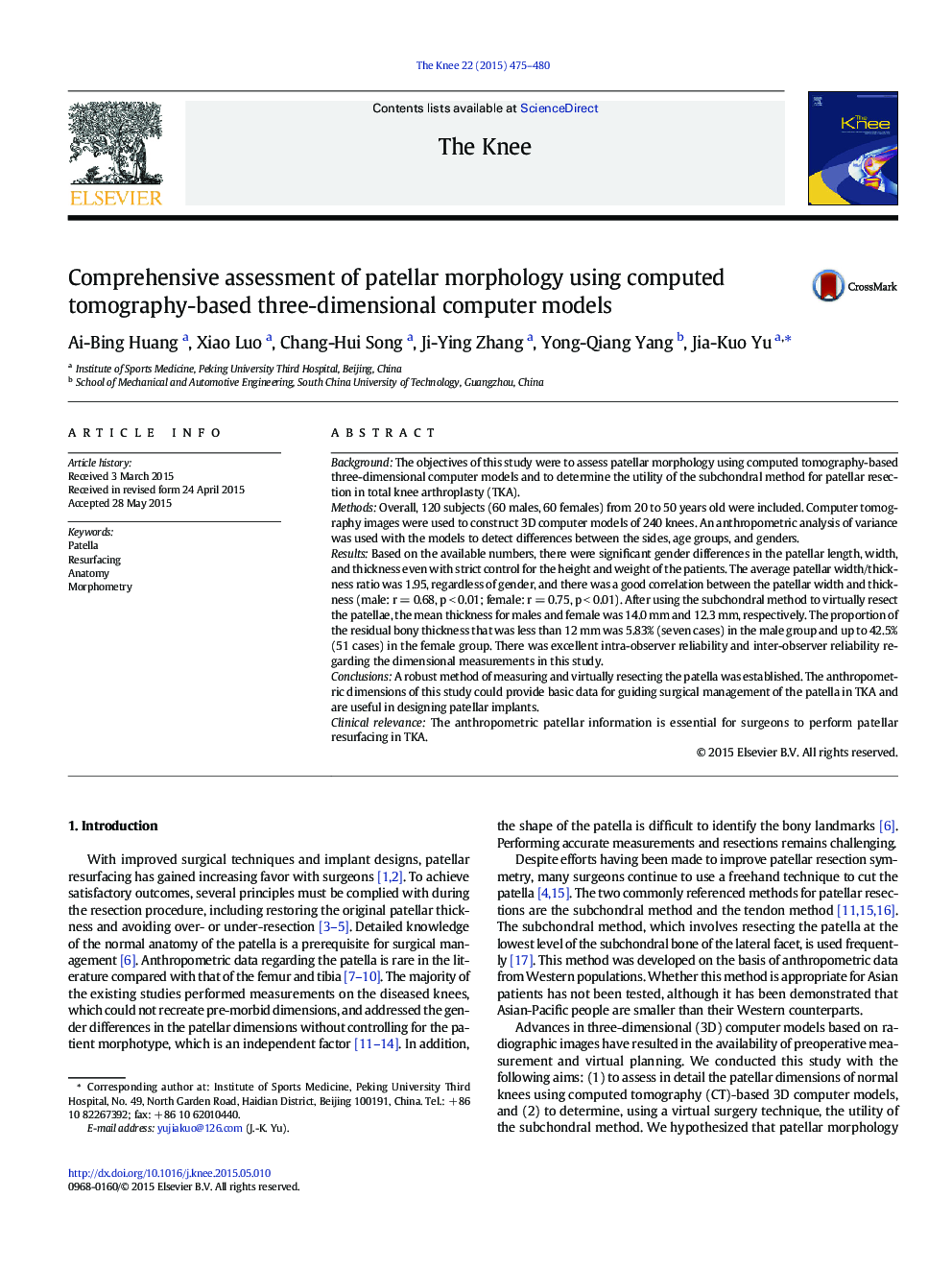| کد مقاله | کد نشریه | سال انتشار | مقاله انگلیسی | نسخه تمام متن |
|---|---|---|---|---|
| 4077349 | 1267214 | 2015 | 6 صفحه PDF | دانلود رایگان |
• We assessed patellar morphology using CT-based 3D computer models.
• A robust method of measuring and virtually resecting the patella was established.
• Gender differences in the patellar morphology do exist even with strict control for patient morphotype.
• The study provides basic data for guiding surgical management of the patella in TKA.
• The anthropometric dimensions are useful in designing patellar implants.
BackgroundThe objectives of this study were to assess patellar morphology using computed tomography-based three-dimensional computer models and to determine the utility of the subchondral method for patellar resection in total knee arthroplasty (TKA).MethodsOverall, 120 subjects (60 males, 60 females) from 20 to 50 years old were included. Computer tomography images were used to construct 3D computer models of 240 knees. An anthropometric analysis of variance was used with the models to detect differences between the sides, age groups, and genders.ResultsBased on the available numbers, there were significant gender differences in the patellar length, width, and thickness even with strict control for the height and weight of the patients. The average patellar width/thickness ratio was 1.95, regardless of gender, and there was a good correlation between the patellar width and thickness (male: r = 0.68, p < 0.01; female: r = 0.75, p < 0.01). After using the subchondral method to virtually resect the patellae, the mean thickness for males and female was 14.0 mm and 12.3 mm, respectively. The proportion of the residual bony thickness that was less than 12 mm was 5.83% (seven cases) in the male group and up to 42.5% (51 cases) in the female group. There was excellent intra-observer reliability and inter-observer reliability regarding the dimensional measurements in this study.ConclusionsA robust method of measuring and virtually resecting the patella was established. The anthropometric dimensions of this study could provide basic data for guiding surgical management of the patella in TKA and are useful in designing patellar implants.Clinical relevanceThe anthropometric patellar information is essential for surgeons to perform patellar resurfacing in TKA.
Journal: The Knee - Volume 22, Issue 6, December 2015, Pages 475–480
